 We haven't been keeping the very best with children dealing with coughs but it still didn't dampen our Martinmas night.
We haven't been keeping the very best with children dealing with coughs but it still didn't dampen our Martinmas night.We had cooked a beautiful chicken roast dinner and had intended in setting up a bonfire in the backyard but eating around a fire would not have been good for all those coughs. So we lit our St Martin lanterns and went out, processing around our house, singing a St Martin song.
When we came back inside we darkened the lounge room and placed the St Martin lanterns all around with one by my side (as a reading lamp) where we cut the cake of St Martin's Cloak and had read-alouds with many of the saint compliation books we have that included the life of St Martin of Tours.
The kids loved it and each book we read from gave a different prespective and covered something unique. Next year we will have read alouds around a bonfire!
There were two books were special mentioning.
 Our Sunday Visitor's Treasury of Catholic Stories is a lovely compilation. Gerald M Costello collects interesting and unusual stories and facts on the lives of saints and shares not the complete life of a saint but a 'highlighted' event.
Our Sunday Visitor's Treasury of Catholic Stories is a lovely compilation. Gerald M Costello collects interesting and unusual stories and facts on the lives of saints and shares not the complete life of a saint but a 'highlighted' event.
Gerald writes about St Martin of Tours on page 209 called, "St Martin's Sacrifice: He Cut His Cape in Two for a Beggar ~ Who Was Jesus Himself" and shares a very interesting connection between...chaplains ~ a capella singing (like chanting Gregorian chant, unaccompanied by an instrument) ~ and the cloak of St Martin.
"The delightful story of St Martin of Tours (c.316-397) giving away half his cloak to a shivering beggar ~ who turned out to be Jesus himself ~ is one of the most familiar in the annals of the saints. Less well known is the fact that as bishop of Tours St Martin went on to become one of the most influential figures in the fourth century Church, especially in the development of Western monasticism.
Here's a facinating sidelight connected with St Martin's life. His cloak was venerated as a sacred relic in a relatively short time after his death, and was kept by the king's soldiers in a small private church. Since the cloak was known by its Latin name, capella, that became the name of the little church housing this important piece of clothing ~ the capella. In time, the name was applied to any small building with an altar intended, to some degree, for private worship ~ capella, in Latin, or, as we know it in English, the chapel. Further, those who had been responsible for guarding the relic in the capella were known as ~ what else? ~ chaplains. And finally, since the typical capella was too small to contain an organ, music that came "from the chapel" was always unaccompanied ~ or, to use the more familiar phrase, a capella.
And to think we owe it all to St Martin of Tours!"
Then the story of the cutting of the cloak begins....I highly recommend this wonderful saint's resource.
Here is a great site that talks in depth about the word, chaplain, I've quoted from parts of it:
Here is the origin of the word chapel:
"ME. chapele, OFr.1 chapele, capele, from ML cappella, LL. capella, dim. of cappa, a cope, cape2; from the cappella or cloak of St. Martin of Tours preserved as a sacred relic in a chapel built for it2-3; the cloak was preserved by the Frankish kings as a sacred relic, was borne before them in battle and used to give sanctity to oaths, and the name “chapel” (and variations) was applied to the sanctuary in which this cloak (cappa or cape) was preserved under the care of its cappellani or “chaplains”1; thence “chapel” generally referred to a sanctuary containing holy relics, attached to a palace, etc., and so to any private sanctuary or holy place . . . the earlier name for which was Oratorium, Oratory.1 "
Here is a good definition of the word chaplains and how it evolved:
"The above classic definitions and etymology of “Chaplain” and “Chapel” reveal a storied history with fairly clear boundaries. Among the greatest aspects of “Chaplain” is that the office is a high order vocation, never a first order vocation. That is, the “Chaplain” is a person who sought out credentials in a faith group and served to some extent and for some time in that faith group prior to assuming the role of “Chaplain.” Only after a period of time and training, does the minister move into the second order of vocation and field of service. A Chaplain is a minister who moved into a specialized ministry setting after a period of service and training (never the reverse).
In essence and historically, a “Chaplain” was sought out from ordained and credentialed clergy to serve as ministers to leaders and kings. The history of St. Martin of Tours illustrates the origin of the term, “chaplain,” and how the term developed into a profession. The clerics who kept charge of the cloak of St. Martin under the Frankish kings were called “chaplains,” and these clerics-termed-chaplains were the first ministers in specialized settings. In the case of the Frankish kings, the first chaplains were military. Since the time of the Frankish kings, throughout the Dark Ages and through the Enlightenment and Reformation, Chaplains were commissioned to serve in settings where the people did not have free and frequent access to a regular clergy person.
For the most part today, a “Chaplain” is a credentialed minister who serves an institution of some sort. Most of the time that institution is a public institution offering a specialized selection of services, and the clients in these specialized environments are to some extent prevented from having free and frequent access to a spiritual and faith-based counselor: like the armed services, hospital services, universities and prisons. Today, even large corporations fall into the category of institutions in the sense of cultivating their own working culture that is somewhat exclusive of the society at large.
For over 1,600 years, since St. Martin of Tours, a Chaplain’s specialized setting was focused upon the total delivery of services within the Chaplain’s own faith. That is, the Chaplain was chosen to minister exclusively to persons of like faith. While practicing the chosen faith and delivering services in these specialized settings, an overall aspect of delivery focused upon faith issues and crisis intervention. The “chapels” evolved and were commissioned as extensions of the church and even in opposition to the established church and always to make clergy-termed-chaplains available to person in faraway places. Said in another way, the Chaplain was made available to those who did not have free and frequent access like those who lived in town or a cathedral city. The services of Chaplains provided faith-based resources to those away from home and in foreign theaters, in the military, in hospitals and in prisons."
 Another book that we enjoyed reading from last night was the TAN book, Saints Who Raised the Dead. This book shares 400 stories of saints raising people back to life. St Martin is one of those hallowed saints and he was known as "Trium mortuorum Suscitator" or Raiser of Three Dead.
Another book that we enjoyed reading from last night was the TAN book, Saints Who Raised the Dead. This book shares 400 stories of saints raising people back to life. St Martin is one of those hallowed saints and he was known as "Trium mortuorum Suscitator" or Raiser of Three Dead.
St Martin is obviously a greatly revered saint in this book as he has a chapter dedicated to him alone, seven pages. His story starts on page 47. What I'd like to share for you in point form is some of the facinating highlights of his life.
~ St Martin's friend Sulpicius Severus, a Roman nobleman in his Dialogues, wrote a biography on the life of St Martin. Here is that biography online.
~ Fourth century Gaul, had christians only in the larger cities. The countryside was mainly pagan, but it would be St Martin that would change that situation. He would go onto set the example of parish organization, bishop's visitations and for pastoral solicitude.
~ St Martin was born in an area of modern Hungary.
~ He was all these things in some time in his life: solider, hermit, monk, founder, bishop, pastor and wonder worker of great miracles.
~ He knew St Hilary of Poitiers who was a bishop, he supported St Hiliary in the fight against Arianism and St Hilary had St Martin ordained an exorcist.
~ St Martin healed a notorious leper who stood at the Porte St Martin (old St Martin's Gate) opposite the Pont au Change in Paris. This converted the Parisians who were a very licentious people.
~ St Martin used Holy Oil with faith and prayer, healing a 12 year old girl who had been mute since birth; many witnesses converted.
~ St Martin prayed one day upon seeing a hugh, stone, cone-shaped temple to a false god in the Gaulish countryside. Through his prayer a storm developed swiftly, which demolished the temple completely. The pagans converted and he built a church for them on the site.
~ After St Martin's death the Bishop Gregory of Tours filled four volumes with the stories of his miracles after his death.
~ He rose three different people to life:
1. One of his monks. The monk recalled that in the hours after his death he was led to the tribunal of a judge and there sentenced to go with 'a vulgar crowd to a region of darkness.' As this sentence was being handed down, two angels came to judge to say that St Martin was praying for this man. The angels then escorted the monk back to his body to be restored to life.
2. The second raising from the dead was when St Martin was walking across the estate of a wealthy family only to hear wails coming from a building. Upon entering the house, St Martin saw that a young slave had hanged himself. St Martin began to pray in front of this lifeless man and he came back to life.
3. The third raising of the dead brought with it a massive conversion to the faith of many pagans who witnessed the event. St Martin was approached by a group of pagans, from amidst this crowd a wailing mother holding her dead child. She came forth and shouted to St Martin, "You are God's friend, bring my son back to life, he is our only son!" St Martin knelt and prayed, restoring this boy to life. The reaction was instant, the pagans wanted to become christians. St Martin laid his hands upon them all and made them catechumens.
I hope your Martinmas day is a blessed one!


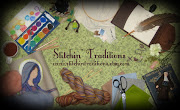


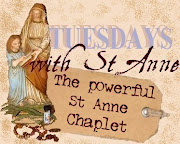



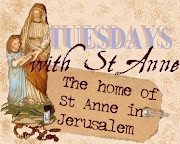










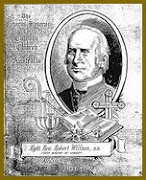
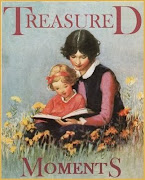







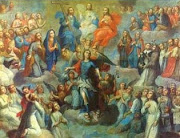
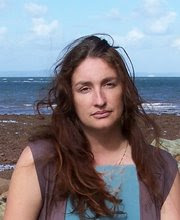



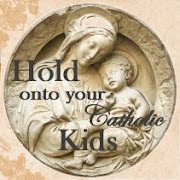


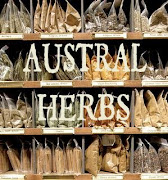














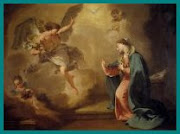









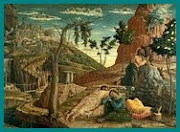


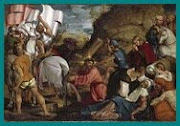

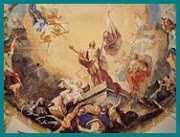


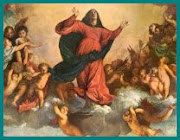
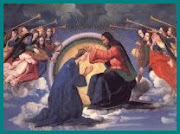

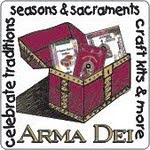






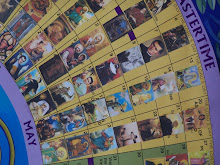


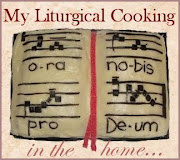
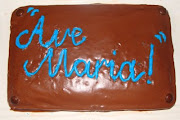
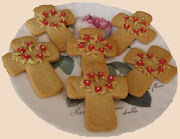

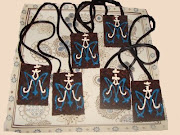
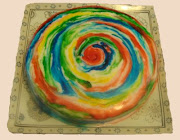
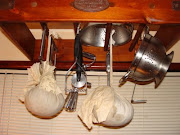

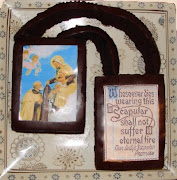

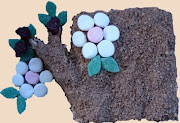
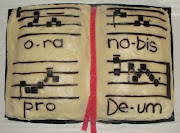

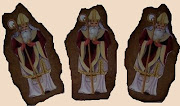







1 comment:
You are so awesome! Thank you so much Anne! This was great! I can't wait to share the info with my musician husband and see if he knows were the word acapella came from!
Thanks!
-Susana
htto://www.montessoricandy.com
Post a Comment